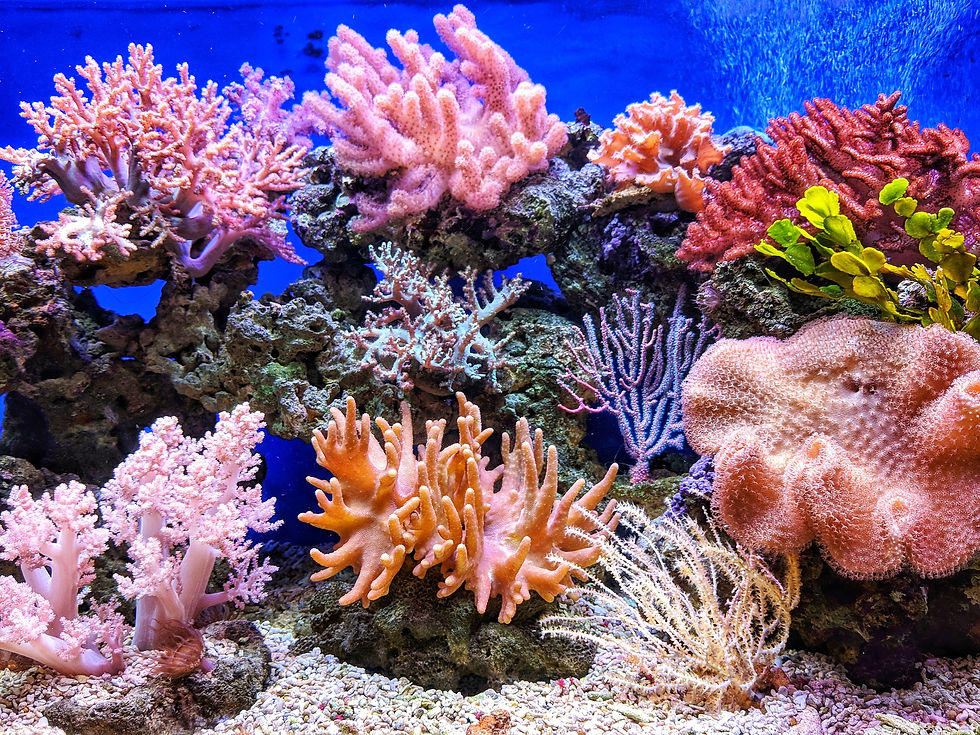How Microplastics in Our Clothes are Killing Sea Life
- Lizzy Harrison

- Jun 15, 2021
- 3 min read
Updated: Aug 16, 2021
One of the greatest causes of water pollution comes from the fashion industry. In fact, 20% of industrial water pollution is caused by the chemicals used in treating and dying textiles. It also contributes to around a third of the world’s microplastics, their origins mostly coming from synthetic textiles.
When shopping to buy new clothes, the manufacturing process is rarely a high concern for the everyday shopper. But it should matter. Why? Because the pollution from it is killing sea life around the world and is even inside us too. One t-shirt can cause more damage than we realise.
What are microplastics?
Microplastics are pieces of plastic that are no bigger than 5mm. They are sometimes created at that size, for example cosmetics use microbeads, but other times they are small flecks from broken down plastic and waste. They can be found in many everyday items and can be even smaller in size, called nanoplastics.
How harmful are microplastics?
Very. They affect climate change, natural habitats, and can disrupt ecosystems.
Microplastics are taken in by all types and sizes of marine life. When the larger creatures avoid it directly, they ingest it through the smaller organisms they feed on. If you were to look at an entire food chain, there would be microplastics in each part. This extends to humans too. We consume sea life with microplastics inside them and through consumption they are passed into us.
Marine wildlife such as whales, turtles, seabirds, and fish will sometimes mistake plastic for prey and fill their stomachs with microplastics. This can lead to starvation from lack of nutrients, alongside lacerations, infections, internal injuries, and even cause some creatures to have difficulty swimming.
More commonly known, and more often shown, is that plastic can suffocate and injure wildlife by getting tangled around their bodies and airways. Floating plastics can cause severe casualties but also carry bacteria that is invasive and harmful to food chains or ecosystems.
What chemicals are in our water?
It isn’t just microplastics which are causing harm. The process of dying and treating textiles uses many chemicals – that when put into our waterways – cannot be broken down. Like microplastics they infect sea life and food chains, and they too are inside us.
At the very least, we should worry about these chemicals because they are known to be carcinogenic, meaning they have the potential to cause cancer. If that wasn’t enough to raise concerns, these chemicals can also interfere with the endocrine system in both humans and animals, causing neurological, reproductive, developmental, and immune disorders.
What can WE do to prevent this?
An easy step we can all do is reduce how often we wash our clothes. Every time we wash our clothes, they release microfibres. By washing them less, we reduce the amount released into our water systems. We can also use less water during these washing cycles to further reduce this.
Additionally, it is advised to air dry clothes rather than tumble drying them. This is because in a tumble dryer clothes can produce even more microfibres that are left uncaught or filtered.
Another step would be to adopt more sustainable methods of shopping when buying fashion. Switching from ‘fast-fashion’ to ‘slow-fashion’, but also making our clothes last longer, buying less frequently, and checking the companies that we are buying from. Some brands are already trying to improve and develop more sustainable methods of producing clothing, meanwhile others are hiding how much harm they are causing to environment.
Encouraging your favourite brands to be more conscious about their products can help, and not only clothing brands, but manufacturers of washing machines too. By fitting filtration systems into washing machines, we could catch more of the microfibres instead of them being put into our water system.
Other people you can encourage to face the pollution of microplastics is your local MP and the government. As of February 2020, the French government passed laws that required all washing machines to have filters installed in them by 2025.
Encouraging your own to do the same would increase the pressure on governments around the world to face plastic pollution in our oceans.



Comments